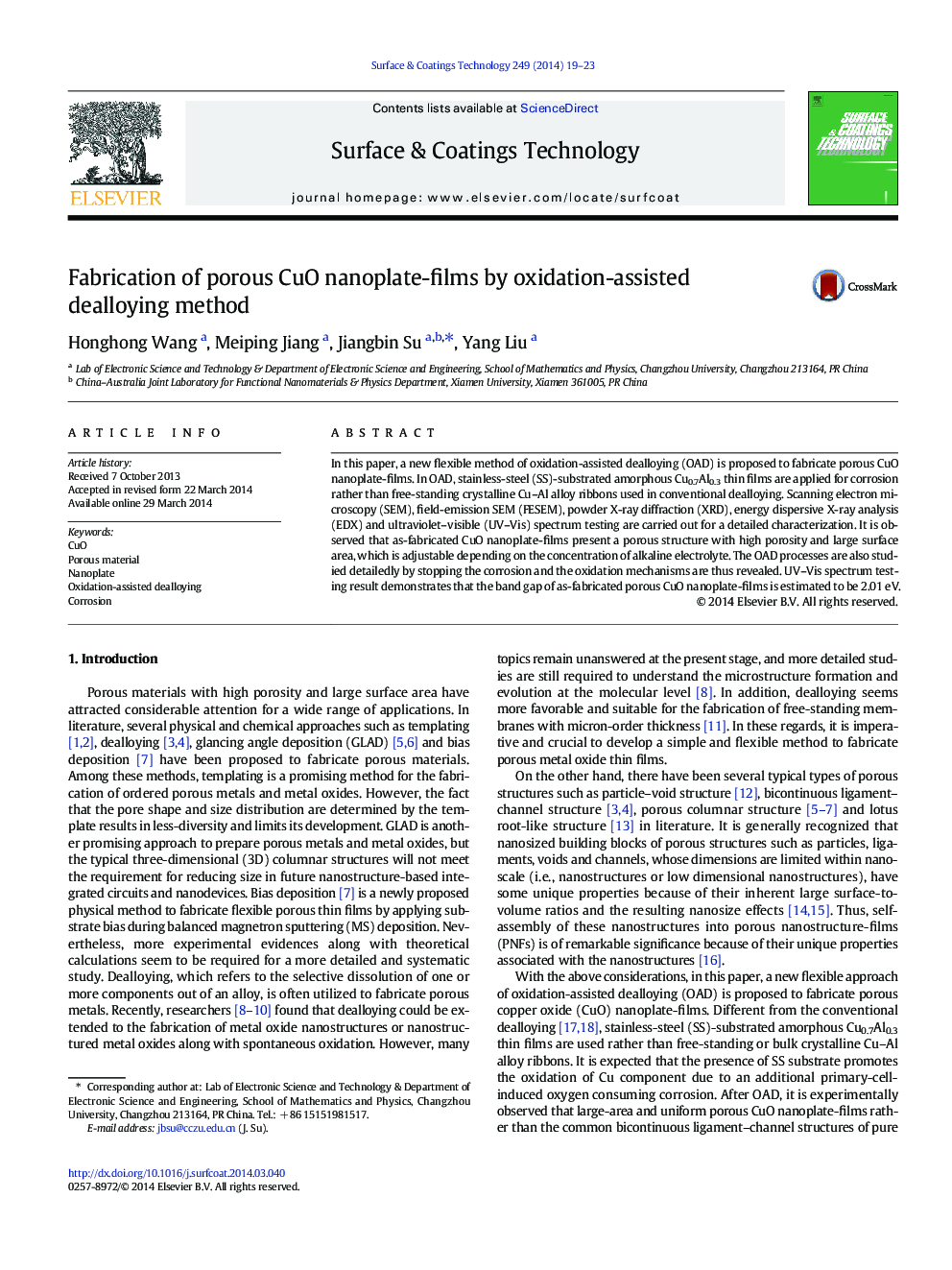| Article ID | Journal | Published Year | Pages | File Type |
|---|---|---|---|---|
| 1657502 | Surface and Coatings Technology | 2014 | 5 Pages |
•A new OAD method is proposed to fabricate porous CuO nanoplate-films.•As-fabricated porous CuO nanoplate-films display a large blue shift of band gap.•The presence of SS substrate promotes the oxidation of Cu component.•Porous structure is adjustable depending on the concentration of NaOH solution.
In this paper, a new flexible method of oxidation-assisted dealloying (OAD) is proposed to fabricate porous CuO nanoplate-films. In OAD, stainless-steel (SS)-substrated amorphous Cu0.7Al0.3 thin films are applied for corrosion rather than free-standing crystalline Cu–Al alloy ribbons used in conventional dealloying. Scanning electron microscopy (SEM), field-emission SEM (FESEM), powder X-ray diffraction (XRD), energy dispersive X-ray analysis (EDX) and ultraviolet–visible (UV–Vis) spectrum testing are carried out for a detailed characterization. It is observed that as-fabricated CuO nanoplate-films present a porous structure with high porosity and large surface area, which is adjustable depending on the concentration of alkaline electrolyte. The OAD processes are also studied detailedly by stopping the corrosion and the oxidation mechanisms are thus revealed. UV–Vis spectrum testing result demonstrates that the band gap of as-fabricated porous CuO nanoplate-films is estimated to be 2.01 eV.
